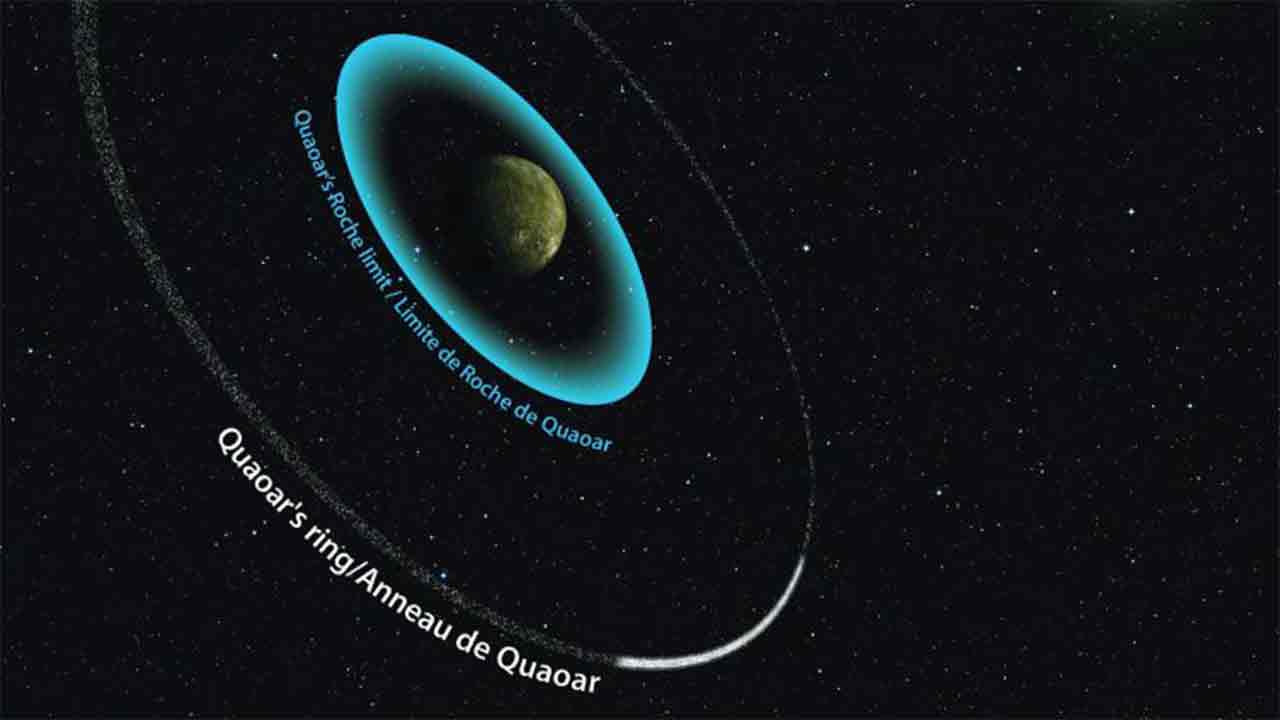Science & Technology, UK (Commonwealth Union) – Scientists have found a new ring system surrounding a dwarf planet at the edge of the Solar System. The ring system circulates much more than is quintessential for other ring systems, questioning the present theories of ways the ring systems are created.
The ring system was observed surrounding the dwarf planet, known as Quaoar, which is located in the Kuiper Belt, a region of the outer solar system that is home to many small icy bodies. It was discovered in 2002 by a team of astronomers. Quaoar is approximately 1,100 kilometers (680 miles) in diameter, making it one of the largest known objects in the Kuiper Belt.
The discovery, was made by a global team of astronomers using HiPERCAM, which is a highly sensitive high-speed camera created by scientists at the University of Sheffield that’s mounted on the biggest optical telescope in the world, the 10.4-meter diameter Gran Telescopio Canarias (GTC) on La Palma.
Scientists indicated that the rings are extremely tiny and not clear to view directly in an image. Instead, they made the finding by observing an occultation, when the light from a background star was obstructed by Quaoar while circulating the Sun. The event remained under a minute, but was unexpectedly led and followed by 2 dips in light, suggesting the ring system around Quaoar.
The ring systems are normally unusual in the Solar System, along with the well-known rings surrounding the giant planets Saturn, Jupiter, Uranus and Neptune, only 2 other minor planets possess rings, which are Chariklo and Haumea. All of the ring systems known on prior occasions can survive as a result of them orbiting close to the parent body, so that tidal forces block the ring material from getting closer and producing moons.
Researchers further noted that what made the ring system around Quaoar exceptional is its position at a distance of more than 7 planetary radii, double the distance as what was assumed on prior occasions to be the highest radius according to the so-called `Roche limit’, which is the outer limit of where ring systems were believed to be able last. When contrasting, the main rings around Saturn lie within 3 planetary radii. The finding has hence forced a revaluation on theories of ring formation.
University of Sheffield’s Professor Vik Dhillon, co-author of the study from the Department of Physics and Astronomy, says “It was unexpected to discover this new ring system in our Solar System, and it was doubly unexpected to find the rings so far out from Quaoar, challenging our previous notions of how such rings form. The use of our high-speed camera – HiPERCAM – was key to this discovery as the event lasted less than one minute and the rings are too small and faint to see in a direct image.”
“Everyone learns about Saturn’s magnificent rings when they’re a child, so hopefully this new finding will provide further insight into how they came to be.”
Studying Quaoar and other objects in the Kuiper Belt is challenging, as they are so far from the Sun and are relatively faint. However, advances in telescopic technology and space exploration have made it possible to learn more about these distant and fascinating objects. The study of Quaoar and its neighbors is an important part of understanding the history and evolution of the solar system, and it is likely that more discoveries will be made in the coming years, particularly with the aid of the HiPERCAM.
The study consisted of 59 academics from across the globe, led by the Federal University of Rio de Janeiro in Brazil. The research received partial funding from the Science and Technology Facilities Council (STFC), part of UK Research and Innovation (UKRI), along with 6 UK universities – Sheffield, Edinburgh, St Andrews, Warwick, Birmingham, and the Open University.








